
 R E S E A R C H I N G U r b a n Y o u t hL a n g u a g e a n d I d e n t i t y R o b D r u m m o n d Researching Urban Youth Language and Identity
R E S E A R C H I N G U r b a n Y o u t hL a n g u a g e a n d I d e n t i t y R o b D r u m m o n d Researching Urban Youth Language and Identity  Rob Drummond Researching Urban Youth Language and Identity Rob Drummond Department of Languages, Information and Communication Manchester Metropolitan University Manchester, UK ISBN 978-3-319-73461-3 ISBN 978-3-319-73462-0 (eBook) https://doi.org/10.1007/978-3-319-73462-0 Library of Congress Control Number: 2018933608 The Editor(s) (if applicable) and The Author(s) 2018 This work is subject to copyright. All rights are solely and exclusively licensed by the Publisher, whether the whole or part of the material is concerned, specifically the rights of translation, reprinting, reuse of illustrations, recitation, broadcasting, reproduction on microfilms or in any other physical way, and transmission or information storage and retrieval, electronic adaptation, computer software, or by similar or dissimilar methodology now known or hereafter developed. The use of general descriptive names, registered names, trademarks, service marks, etc. in this publication does not imply, even in the absence of a specific statement, that such names are exempt from the relevant protective laws and regulations and therefore free for general use. The publisher, the authors and the editors are safe to assume that the advice and information in this book are believed to be true and accurate at the date of publication. Neither the publisher nor the authors or the editors give a warranty, express or implied, with respect to the material contained herein or for any errors or omissions that may have been made.
Rob Drummond Researching Urban Youth Language and Identity Rob Drummond Department of Languages, Information and Communication Manchester Metropolitan University Manchester, UK ISBN 978-3-319-73461-3 ISBN 978-3-319-73462-0 (eBook) https://doi.org/10.1007/978-3-319-73462-0 Library of Congress Control Number: 2018933608 The Editor(s) (if applicable) and The Author(s) 2018 This work is subject to copyright. All rights are solely and exclusively licensed by the Publisher, whether the whole or part of the material is concerned, specifically the rights of translation, reprinting, reuse of illustrations, recitation, broadcasting, reproduction on microfilms or in any other physical way, and transmission or information storage and retrieval, electronic adaptation, computer software, or by similar or dissimilar methodology now known or hereafter developed. The use of general descriptive names, registered names, trademarks, service marks, etc. in this publication does not imply, even in the absence of a specific statement, that such names are exempt from the relevant protective laws and regulations and therefore free for general use. The publisher, the authors and the editors are safe to assume that the advice and information in this book are believed to be true and accurate at the date of publication. Neither the publisher nor the authors or the editors give a warranty, express or implied, with respect to the material contained herein or for any errors or omissions that may have been made.
The publisher remains neutral with regard to jurisdictional claims in published maps and institutional affiliations. Printed on acid-free paper This Palgrave Macmillan imprint is published by Springer Nature The registered company is Springer International Publishing AG The registered company address is: Gewerbestrasse 11, 6330 Cham, Switzerland To Lynda, Maya, Cassia, and IsaacThis is what Ive been doing in the shed.Preface This book, although limited to an academic year of ethnographic obser vation, represents the culmination of a number of years of thought and research into urban youth language. It also represents a period of serious reflection on the process of carrying out sociolinguistic research. My belief is that it will be of value to two core groups of people. Firstly, those who work within, or have an interest in, sociolinguistics at any level or in any area. Secondly, those who work with, or who have an interest in the lives of, young people.
My hope is that it will also be of interest more widely to anyone who has any connection to the study of language, or with the process of linguistic, ethnographic, or youth-oriented research. Numerous people have helped in the creation of this book. For insight ful comments on various drafts (as well as general and invaluable sup port), I would like to thank Manchester Metropolitan colleagues Huw Bell, Erin Carrie, and Sam Larner. I would also like to thank colleagues from other institutions who kindly agreed to read and comment on the full text: Mark Brenchley, Sam Kirkham, Kenny Richardson, Sarah Spencer, and Kevin Watson. Their combined feedback was extremely use ful in reframing some fundamental aspects of the writing. Thanks also to my eldest daughter Maya, who read an early draft and said, Its good.
Better than I thought it was going to be. For financial support and research leave time in relation to the writing of the book, I am very grateful to the faculty of Arts and Humanities and viiviii Preface the Department of Languages, Information and Communications at Manchester Met, particularly Berthold Schoene and Derek Bousfield. Thanks especially to Derek and the Department for paying for the ser vices of the wonderful illustrator that is Andrew Chiu (see Chap). For taking the burden of our shared teaching and other responsibilities at various times throughout this process, I am additionally grateful to my Manchester Voices partner, colleague, and friend, Erin Carrie. For help with transcription, I thank Emma Cieslar, Josh Dray-Reid, Oscar Greco, Agata Juszczyk, Grace Thompson, and Annie Wainwright. Thanks to the Leverhulme Trust, for providing the funding that made the research possible in the first place.
Thanks to the Manchester Centre for Youth Studies for supporting the project into the future. Special thanks to Susan Dray, my research partner. Her involvement made the whole project immeasurably stronger right from the beginning, and I learned an incredible amount from working with her. She taught me to look more critically and question some of the assumptions that surround us as sociolinguists, and that has made me a better researcher. I am lucky enough to have a very supportive family. Usually. Usually.
Most of all, I am grateful to the staff and students at the Manchester Secondary Pupil Referral Unit. Without their continued support and enthusiasm, the project simply wouldnt have happened. Thanks to Helen McAndrew, Tricia Egan, and Andy Vaughton for helping us get the proj ect up and running at the beginning. Every single member of staff in the centres, without exception, was friendly and welcoming, but I do want to express particular thanks to Roger, Kirsty, Paul, Phil, Fran, Andy, Liz, Lara, and Russell, who went out of their way to help make the project a success. Manchester, UK Rob Drummond Contentsixx ContentsContentsxiTranscription Conventions [ ] overlapping speech (.) pause of less than one second (sec) pause times in seconds ((laughter)) contextual or paralinguistic information (unclear) unintelligible speech : lengthening underline emphatic stress < > transcriber comment <[ ]> phonetic transcription xiiiList of Figures Fig. 6.2 Mean values for each vowel across all 11 speakers. 6.2 Mean values for each vowel across all 11 speakers.
Normalised using the modified Watt and Fabricius method Fig. 6.3 Boxplot of F2F1 for 11 speakers in the production of happ y, showing context of the tokens. Speakers ordered according to their position on the urban/street-style orientation scale Fig. 6.4 Boxplot of F2F1 for 11 speakers in the production of lett er, showing context of the tokens. Speakers ordered according to their position on the urban/street-style orientation scale Fig. 6.5 Mean values for each vowel across all 11 speakers, with the inclusion of two additional variants of lett er and happ y.
Normalised using the modified Watt and Fabricius method Fig. 6.6 Quotative use in the PRU, separated by speaker sex and com pared with MLE and a sample from the NECTE2 corpus Fig. 6.7 The range of quotatives used by each individual, arranged by use of say. Total number of tokens for each speaker in brackets 214 Fig. 7.1 Distribution of the 819 [, f, t] (TH) tokens, ordered from the right by frequency of [t]. Twenty-five speakers Fig. 8.2 The Purple Pen xvList of Tables Table 2.1 Key centre staff Table 2.2 The young people. 8.2 The Purple Pen xvList of Tables Table 2.1 Key centre staff Table 2.2 The young people.
Pseudonym, sex, year group, appearance, and personality Table 2.3 Labels given to particular individuals indicating possible social groupings Table 5.1 Staff and students at Meadow Cross Table 5.2 Staff and students at Ashbourne Table 7.1 Self-reported ethnicities for each individual Table 7.2 Overall results of the auditory analysis for (TH) Table 7.3 Independent variables for the regression analysis Table 7.4 Regression analysis (Rbrul) of the effect of linguistic and social factors on the realisation of voiceless th 22 speakers with > 10 tokens Table 7.5 Use of [t] and other th variants divided by speaker ethnicity. Percentages show proportion of total tokens for that group Table 7.6 Regression analysis (Rbrul) of the effect of linguistic and social factors on the realisation of voiceless th nine speakers who produced [t] Table 7.7 Regression analysis (Rbrul) of the effect of linguistic and social factors on the realisation of voiceless th only thing words 241
Next page

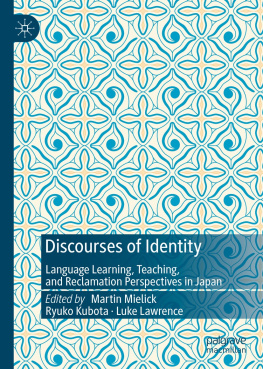
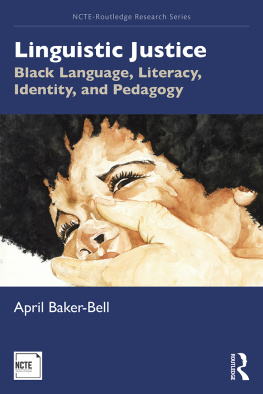
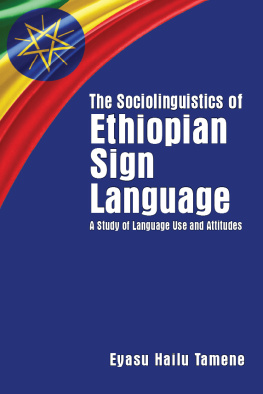
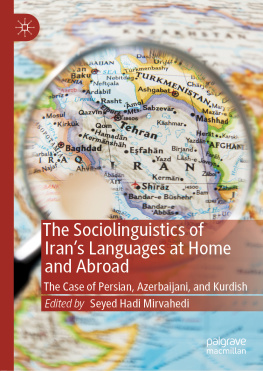
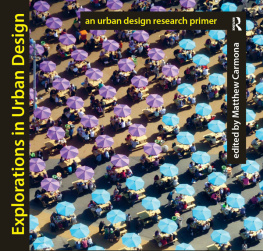

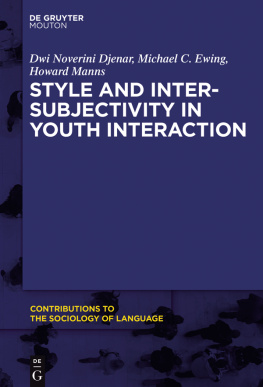
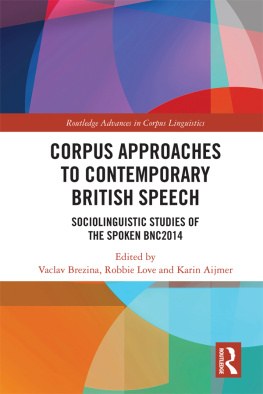
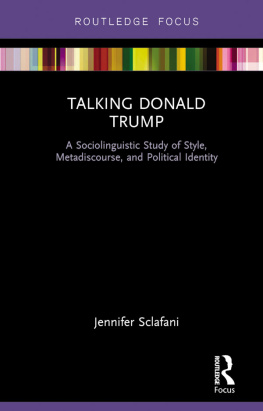
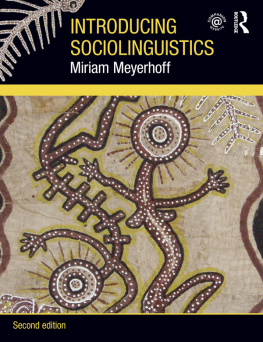
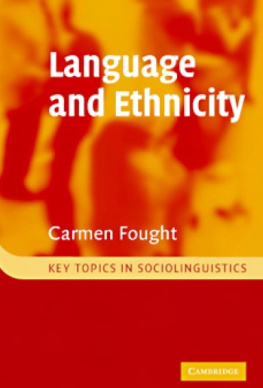

 R E S E A R C H I N G U r b a n Y o u t hL a n g u a g e a n d I d e n t i t y R o b D r u m m o n d Researching Urban Youth Language and Identity
R E S E A R C H I N G U r b a n Y o u t hL a n g u a g e a n d I d e n t i t y R o b D r u m m o n d Researching Urban Youth Language and Identity  Rob Drummond Researching Urban Youth Language and Identity Rob Drummond Department of Languages, Information and Communication Manchester Metropolitan University Manchester, UK ISBN 978-3-319-73461-3 ISBN 978-3-319-73462-0 (eBook) https://doi.org/10.1007/978-3-319-73462-0 Library of Congress Control Number: 2018933608 The Editor(s) (if applicable) and The Author(s) 2018 This work is subject to copyright. All rights are solely and exclusively licensed by the Publisher, whether the whole or part of the material is concerned, specifically the rights of translation, reprinting, reuse of illustrations, recitation, broadcasting, reproduction on microfilms or in any other physical way, and transmission or information storage and retrieval, electronic adaptation, computer software, or by similar or dissimilar methodology now known or hereafter developed. The use of general descriptive names, registered names, trademarks, service marks, etc. in this publication does not imply, even in the absence of a specific statement, that such names are exempt from the relevant protective laws and regulations and therefore free for general use. The publisher, the authors and the editors are safe to assume that the advice and information in this book are believed to be true and accurate at the date of publication. Neither the publisher nor the authors or the editors give a warranty, express or implied, with respect to the material contained herein or for any errors or omissions that may have been made.
Rob Drummond Researching Urban Youth Language and Identity Rob Drummond Department of Languages, Information and Communication Manchester Metropolitan University Manchester, UK ISBN 978-3-319-73461-3 ISBN 978-3-319-73462-0 (eBook) https://doi.org/10.1007/978-3-319-73462-0 Library of Congress Control Number: 2018933608 The Editor(s) (if applicable) and The Author(s) 2018 This work is subject to copyright. All rights are solely and exclusively licensed by the Publisher, whether the whole or part of the material is concerned, specifically the rights of translation, reprinting, reuse of illustrations, recitation, broadcasting, reproduction on microfilms or in any other physical way, and transmission or information storage and retrieval, electronic adaptation, computer software, or by similar or dissimilar methodology now known or hereafter developed. The use of general descriptive names, registered names, trademarks, service marks, etc. in this publication does not imply, even in the absence of a specific statement, that such names are exempt from the relevant protective laws and regulations and therefore free for general use. The publisher, the authors and the editors are safe to assume that the advice and information in this book are believed to be true and accurate at the date of publication. Neither the publisher nor the authors or the editors give a warranty, express or implied, with respect to the material contained herein or for any errors or omissions that may have been made.